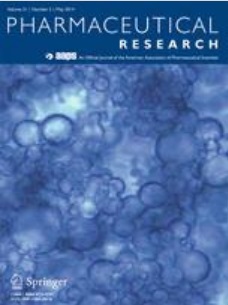Purpose
To explore the potential of magnetofection in delivering pDNA to primary mouse embryonic fibroblasts (PMEFs) and porcine fetal fibroblasts (PFFs) and investigate an effect of magnetic cell labeling on transfection efficacy.
Methods
The formulation and a dose of the magnetic vector were optimized. The efficacy of the procedure was quantified by vector internalization, transgene expression and cell iron loading upon specific labeling with Ab-conjugated magnetic beads or non-specific labeling with MNPs.
Results
Up to sixty percent of PMEF and PFF cells were transfected at low pDNA doses of 4–16 pg pDNA/cell. Specific labeling of the PMEFs with MNPs, resulted in a 3- and 2-fold increase in pDNA internalization upon magnetofection and lipofection, respectively, that yielded a 2–4-fold increase in percent of transgene-expressing cells. Non-specific cell labeling had no effect on the efficacy of the reporter expression, despite the acquisition of similar magnetic moments per cell. In PFFs, specific magnetic labeling of the cell surface receptors inhibited internalization and transfection efficacy.
Conclusions
Magnetic labeling of cell-surface receptors combined with the application of an inhomogenous magnetic field (nanomagnetic activation) can affect the receptor-mediated internalization of delivery vectors and be used to control nucleic acid delivery to cells.

